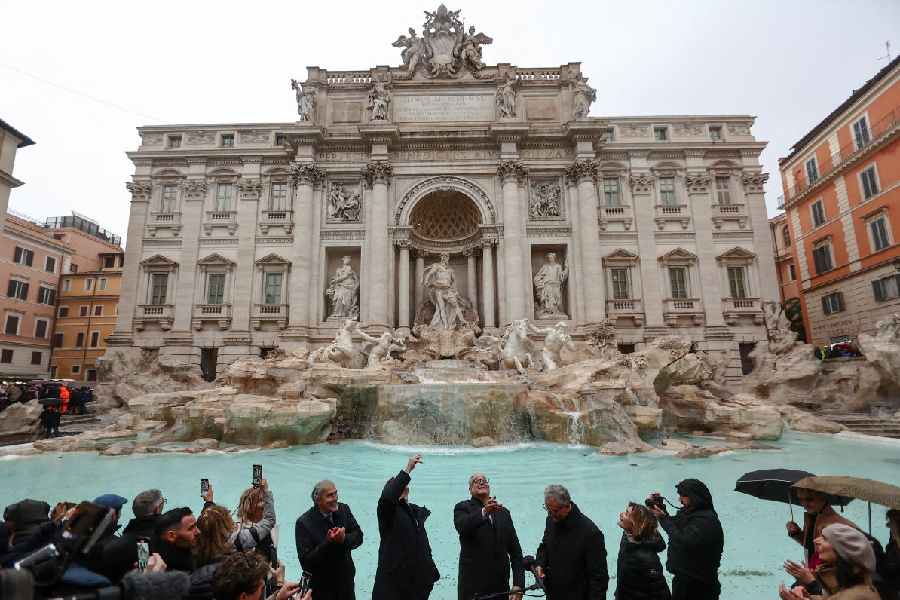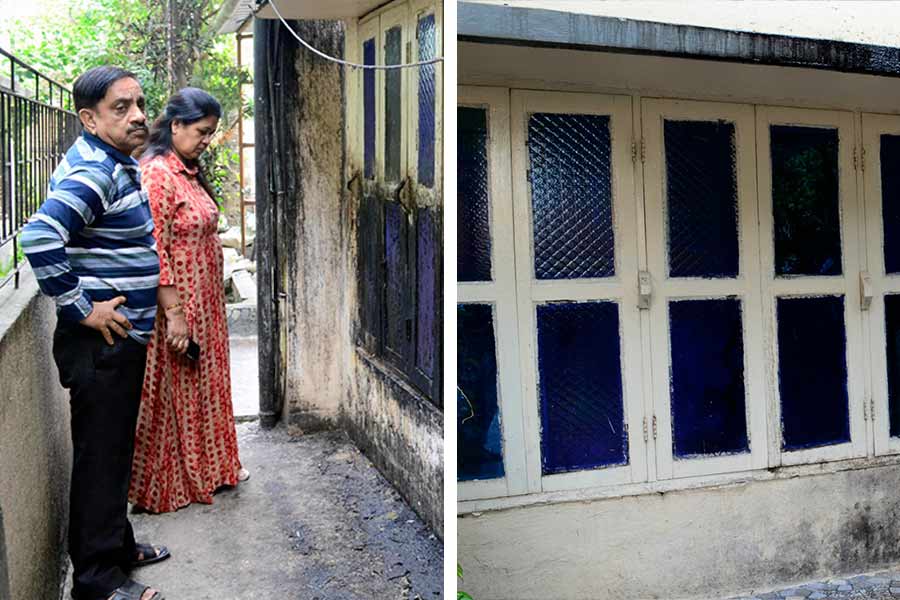There’s a good chance that many first-time visitors to the Trevi Fountain in Rome know the drill. To ensure a return to the Eternal City, the legend goes, stand with your back to the water and toss a coin with your right hand over your left shoulder.
The ritual became famous around the world thanks to the 1954 film Three Coins in the Fountain, and its eponymous song — recorded by Frank Sinatra — which won the Oscar for best original song.
The coin throw is such a popular item on tourist itineraries that even a recent three-month restoration that cut off direct access to the 18th-century fountain was not a deterrent. Visitors still crowded in front of the transparent panels protecting the work site to lob coins — about $63,000 — into a squat utilitarian tub.
“The tourist is going to toss a coin, they don’t care about construction or no construction,” Fabrizio Marchioni said on a chilly December morning a few days before the fountain’s reopening.
He should know.
For 13 years, Marchioni’s principal job for the Roman Catholic charity Caritas has been to collect and count the coins tossed into the fountain.
“These are coins of solidarity,” as “they’re put to good use,” said Giustino Trincia, the director of Rome’s Caritas branch. More than 52,800 meals were doled out at Caritas soup kitchens in Rome in 2023, just one of many projects the charity runs.
The coins are claimed by Rome’s municipal administration, but it has donated them to Caritas since 2005. The proceeds in 2023 were close to $20,81,000.
The recent cleanup of the fountain, 10 years after a major restoration, came just in time for the start of the Catholic Church’s Jubilee Year on Christmas Eve. With some 32 million visitors expected over the next year, Rome is in a state of busy preparation, with dozens of monuments being cleaned and polished.
The fountain’s temporary closure also allowed city officials to test out controlling visitor access. At the reopening, just before Christmas, officials announced that only 400 people at a time would be allowed into the sunken area in front. Visitors will enter at one end of the basin and exit on the other side, with monitors keeping watch during daytime hours.
“The goal is to allow everyone to enjoy the fountain to the fullest without the crush, without confusion,” Roberto Gualtieri, the mayor of Rome, said at the reopening. The city is also considering charging a nominal fee, he said.
Rome has a plethora of fountains, the public, decorative faces of aqueducts that were originally built by the ancient Romans, but none match the fame of the Fountain of Trevi. In the early 18th century, “a practically unknown architect”, Nicola Salvi, replaced a more modest iteration of the fountain with the monumental work that reaches nearly 115 feet in height, arguably “the best-known monument of modern Rome”, said Claudio Parisi Presicce, Rome’s superintendent for cultural heritage.
Celebrated in a symphony, as well as in artworks over the centuries, the fountain became a cinematic star in the 20th century, most famously in Fellini’s La Dolce Vita, where Anita Ekberg throatily called to Marcello Mastroianni to join her as she waded in its waters (an act that would be much frowned upon in real life).
Fresh fame came via the 2024 season of Netflix’s series Emily in Paris, after the protagonist, Emily Cooper, made the fountain one of her first Roman stops.
The coin-tossing ritual began at the end of the 19th century, when German academics studying in Rome reprised an ancient Roman practice of throwing coins into water for good luck. It quickly caught on.
Over the decades, the coins — and people sitting on the marble edge of the fountain (another definite no-no) — have contributed to its wear and tear, especially as visitor numbers have risen sharply in recent years.
“These are magnificent, enormous monuments, but they are very delicate,” said Anna Maria Cerioni, who has overseen many of Rome’s fountains for three decades in her role as head of restoration for the city’s art superintendency.
The minerals in the coins often leave marks on the product used to waterproof the basin. Specially developed for the fountain, it is known as “Trevi White”, and periodic maintenance is necessary.
The fountain is still supplied by the Aqua Virgo, built in the first century B.C.E. and the only one of the 11 aqueducts built by the ancient Romans that has remained almost constantly in use, said Marco Tesan, who oversees the maintenance of some of Rome’s fountains and aqueducts for the water and electricity utility ACEA.
Twice a week, the utility’s workers use a machine developed for swimming pools to suck up the coins from the basin. During the maintenance phase, brooms and dustpans sufficed, “though you still feel achy at the end of the day,” said Luca Tasselli of ACEA.
New York Times News Service











